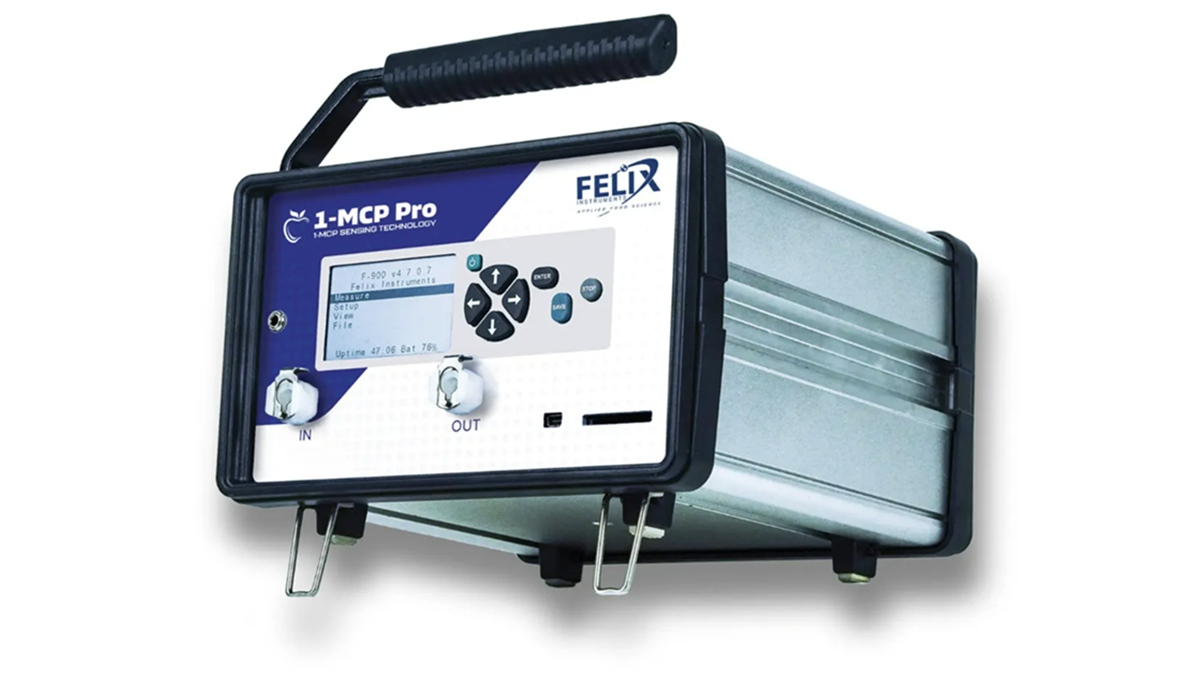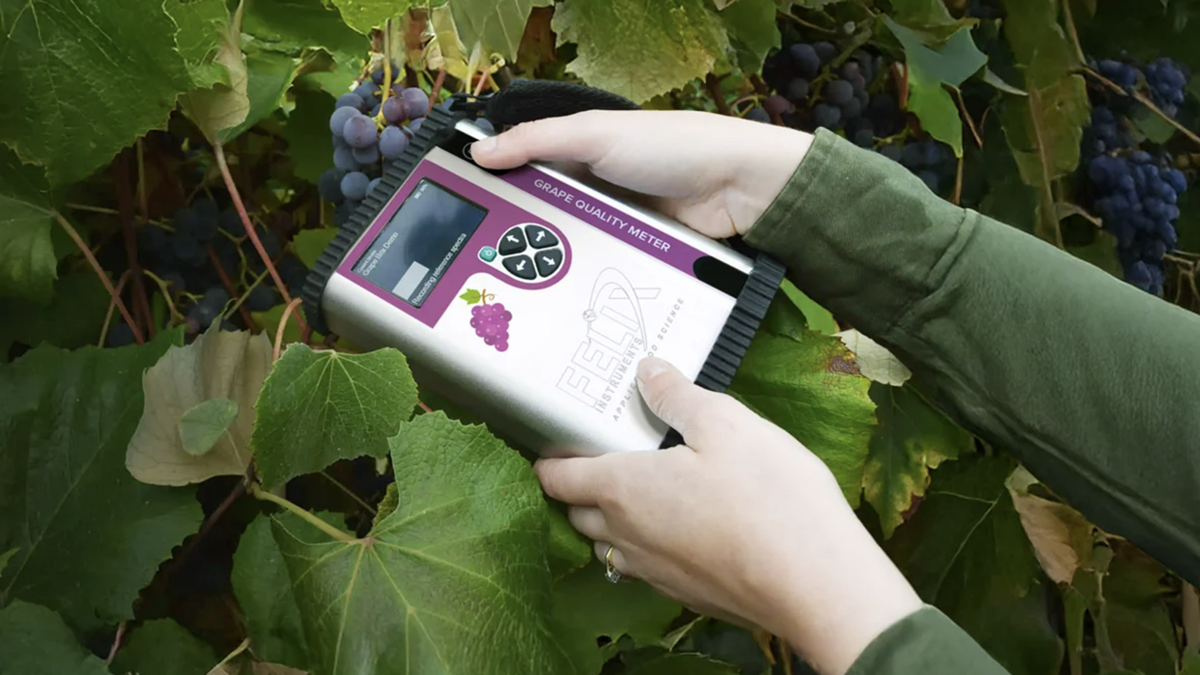Measurements
In-line VIS-NIR Spectroscopy for Produce Sorting
Consumers expect that the fruits and vegetables they buy are of the highest quality. Therefore, more in-depth quality control and sorting systems are increasingly being used to ensure that supplies reaching retailers meet the required standards. Most fruits and vegetables today are still sorted mostly on the basis of external features such as color, size, weight, and blemishes, but consistently meeting quality control demands is possible only when internal parameters are also examined. Light is made up of wavelengths. The visible range that the human eye can see (VIS; 400?700?nm) is only a small part of it; see Figure 1. To sort and control food quality, many parts of the infrared range are also used, including the near-infrared range (NIR; 700?1400 nm) and short wave infrared (SWIR; 1400?3000?nm). Initially, spectroscopy based on the visible range was used for in-line sorting units, especially to estimate the color of fruits, as several of the pigments react to light in the visible range. The infrared spectrum was used by biochemists to test organic compounds, and they were able to show images and
28 September, 2020
Consumers expect that the fruits and vegetables they buy are of the highest quality. Therefore, more in-depth quality control and sorting systems are increasingly being used to ensure that supplies reaching retailers meet the required standards. Most fruits and vegetables today are still sorted mostly on the basis of external features such as color, size, weight, and blemishes, but consistently meeting quality control demands is possible only when internal parameters are also examined.Light is made up of wavelengths. The visible range that the human eye can see (VIS; 400700?nm) is only a small part of it; see Figure 1. To sort and control food quality, many parts of the infrared range are also used, including the near-infrared range (NIR; 7001400 nm) and short wave infrared (SWIR; 14003000?nm). Initially, spectroscopy based on the visible range was used for in-line sorting units, especially to estimate the color of fruits, as several of the pigments react to light in the visible range. The infrared spectrum was used by biochemists to test organic compounds, and they were able to show images and characteristics that were not recorded by visible spectrum camera. The advantage of using the NIR range is that this spectrums absorption is associated with the vibration of hydrogen bonds formed with other elements. Hence, they are suitable to identify and quantify biocompounds. The NIR wavelengths are useful not only for prepared samples, but also for intact products because they can travel into the substances up to a few millimeters to centimeters deep; whereas, wavelengths over 2500 nm have an effective pathway of only micrometers. Since most of SWIR is within this range, they also have longer pathways into intact produce. NIRs can be used in combination with the VIS or SWIR spectrum. SWIR spectrometers are as good as or more precise than VIS-NIR, but they are far more expensive and give fewer data points. So, VIS-NIR spectrometers are the preferred option. Challenges in Spectroscopy Monitoring In-lineThough spectroscopy and chemometrics have been worked out for a wide range of parameters, some issues remain that have to be fixed. Some factors that have to be considered in the use of in-line spectroscopy tools are as follows: The speed of the conveyor belt. Sampling position is critical, so too much movement can negatively affect results.Changes in fruit sizes and shapes being measured.Measurement of a representative part of the fruits, keeping in mind the distribution of biocompounds within a fruit. Compounds are not homogeneously distributed in different types and these differences will have to be factored in.In-line systems require more calibration and are more complex to operate than their portable counterparts...// In line and other spectrometersEarlier VIS-NIR spectrometers were large and room-sized, but the hardware is steadily being miniaturized. With technological advances, these spectrometers were reduced to benchtop equipment, then to small palm-sized devices that can be attached easily to any part of a sorting line. State of the art commercial spectroscopic systems can monitor fruits on a conveyor with a speed of one meter per second. They can simultaneously control multiple lanes and sort around 10 fruits per second. These systems use SWNIR spectrophotometers. The in-line VIS-NIR tools have led to the development of small but equally powerful portable devices. For two decades now, the technology that was initially restricted post-harvest to commercial packing houses can now be used throughout the supply chain, even by small suppliers, transporters, and retailers. A line of portable produce quality meters from Felix Instruments Applied Food Science is based on NIR spectroscopy and can measure TSS, dry matter, titrable acidity, and external and internal color. Individual readings require only 4-5 seconds and are precise and non-destructive. The following devices can be used in sorting fresh produce in any part of the supply chain: F-750 Produce Quality Meter: a customizable device suitable for many fruits and vegetables using model building. F-751-Avo Avocado Quality Meter: customized for avocados F-751-Mango Quality Meter: with models for common cultivars F-751-Kiwi Quality Meter: specially made for kiwis The last three are based on the F-750 and customized for specific fruits. All four tools are also useful to estimate harvest time on farms. Cost is droppingIn-line VIS-NIR or SWIR-NIR systems have been in use for a long time. Developing technology increases the range of parameters they measure by fixing the issues currently holding back their wide adoption. These continuous advances are also likely to make the devices cheaper and easier to use, benefitting the stakeholders and food production in general. Read all the post HERE.



.jpg)







